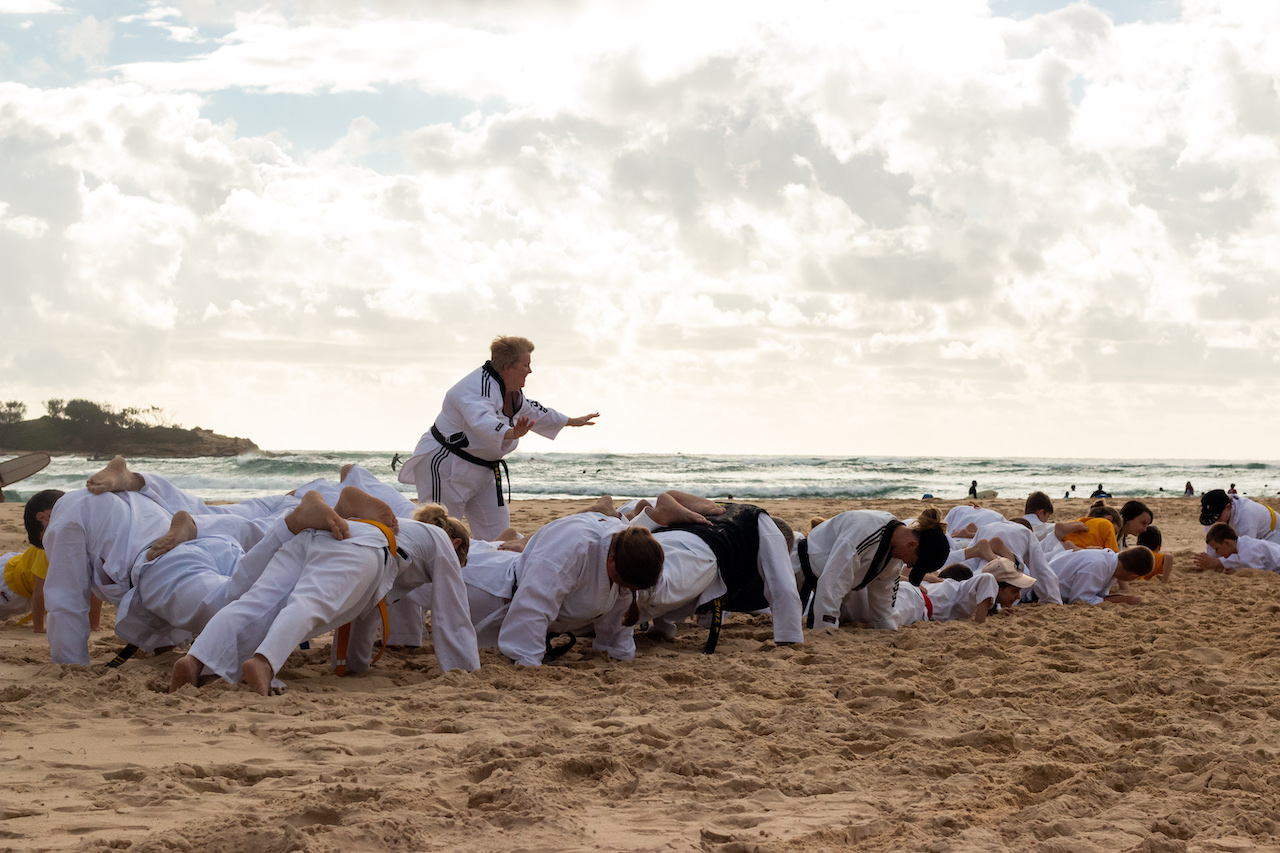Taekwondo Training
Taekwondo TrainingTAEKWONDO TRAINING COVERS A BROAD RANGE OF ACTIVITIES
All elements of Taekwondo can't be covered in one class, so Yun Hap Taekwondo Instructors aim for varied and interesting classes. Instructors follow a curriculum to ensure important skill areas – like self-defence – are covered thoroughly. Below are more details on some of things you may do in taekwondo training.
KICKING
Taekwondo is known for its powerful and dynamic kicks. There are so many different kicks and kicking combinations to learn in the course of training and these kicks become as quick as a hand, but much more powerful. Speed is an essential part of taekwondo because of this need to cover greater distances to kick than to punch. Taekwondo athletes aim for speed... think fast, act fast, and move fast. Kicking high and fast takes great energy and places Taekwondo as one of the top calorie-burning sports.
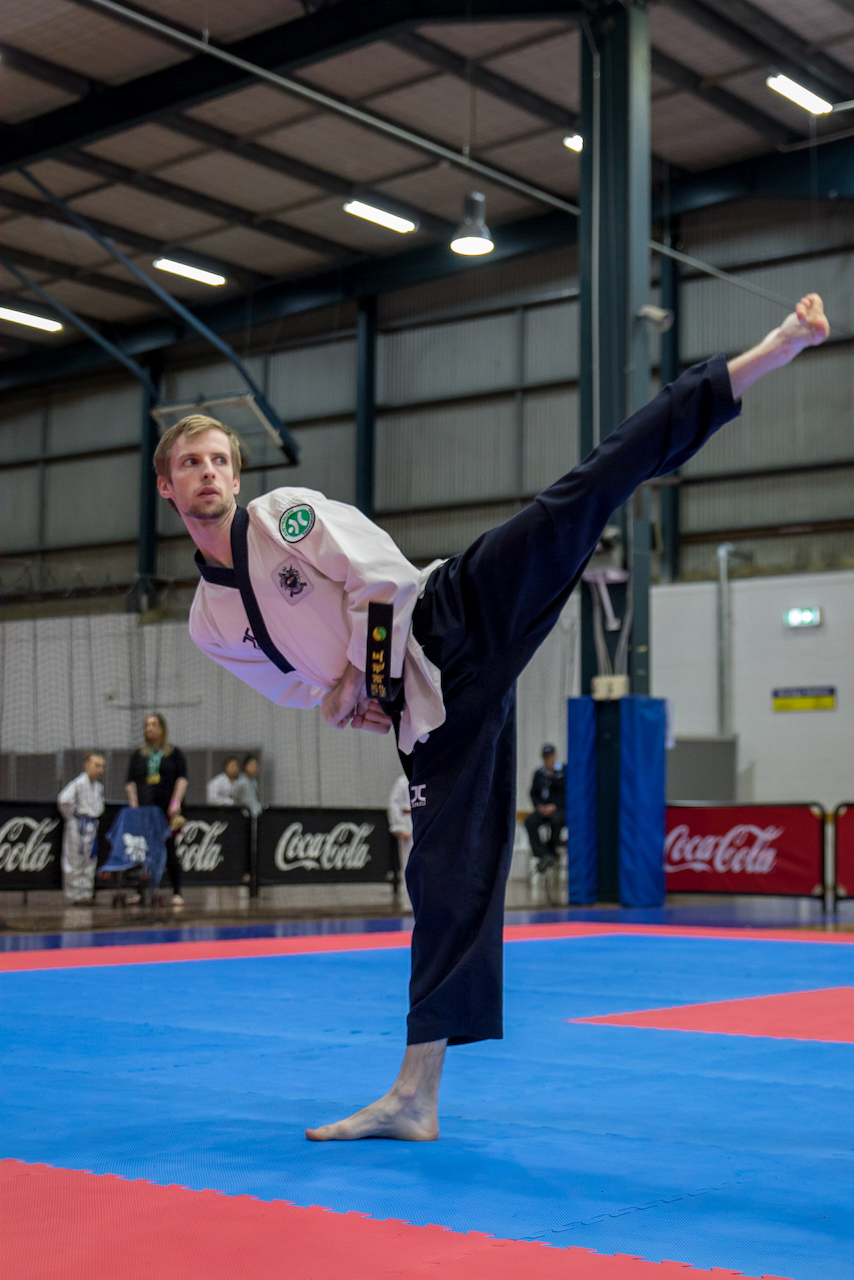
BLOCKING
While there are many attacking moves in taekwondo, like kicking and striking, there are equally as many defensive moves - and for good reason! There are a variety of blocks which take continual practice to perfect in order for the block to be effective and responsive in application. Therefore, a large part of taekwondo training involves drills to practice and apply these blocking techniques for effective self-defence purposes.
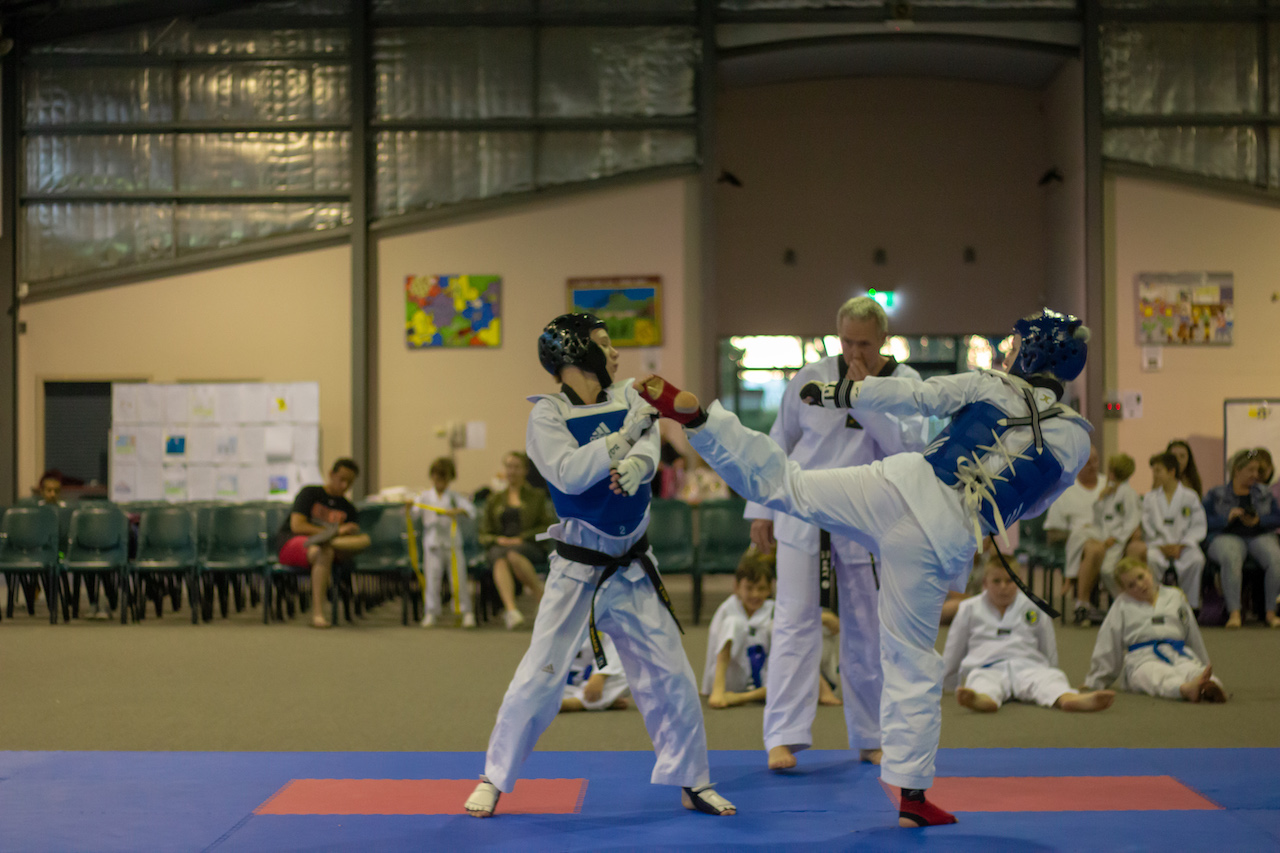
PUNCHING
Yun Hap students are trained in a wide variety of punching and striking techniques, and this is an important part of our curriculum. The meaning of the word 'tae-kwon-do' is the way of the hand and foot and this is very much alive in our dojangs.

STRETCHING
Flexibility and suppleness are necessary for performing taekwondo and in mitigating injury. Stretching will be a part of every class to varying degrees depending on what's happening in class. It's important to stretch the right way and our instructors will assist with stretching techniques. Stretching is best done every day so will be part of your home practice.
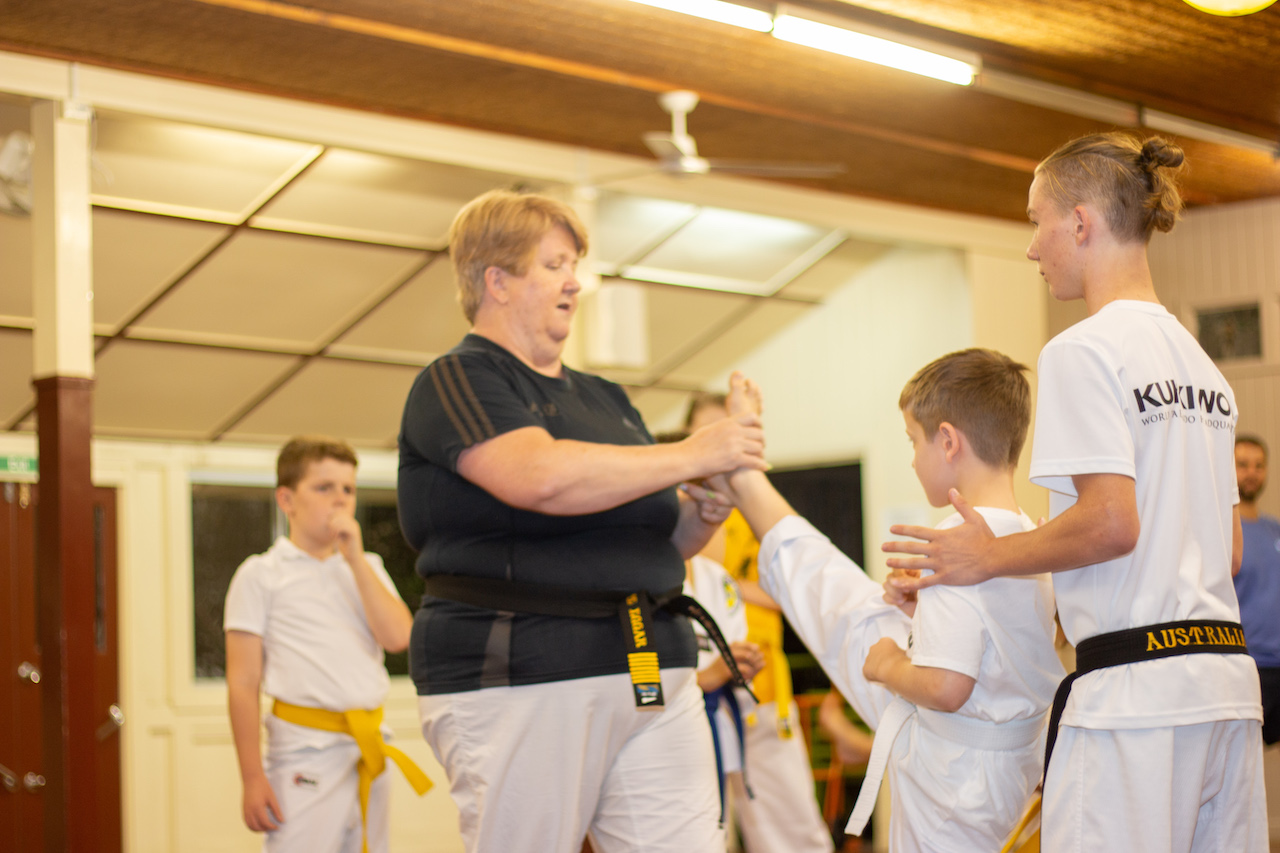
SELF DEFENCE
All of our instructors are trained in extensive self-defence skills and hapkido skills. Hapkido is another Korean martial art with skills complimentary to taekwondo skills. These skills are taught regularly in class as it takes a lot of practice to get them right. Through our affiliation with Grandmaster Sung Soo Lee who is a 9th dan in taekwondo and hapkido, our instructors and students are continually developing these skills.
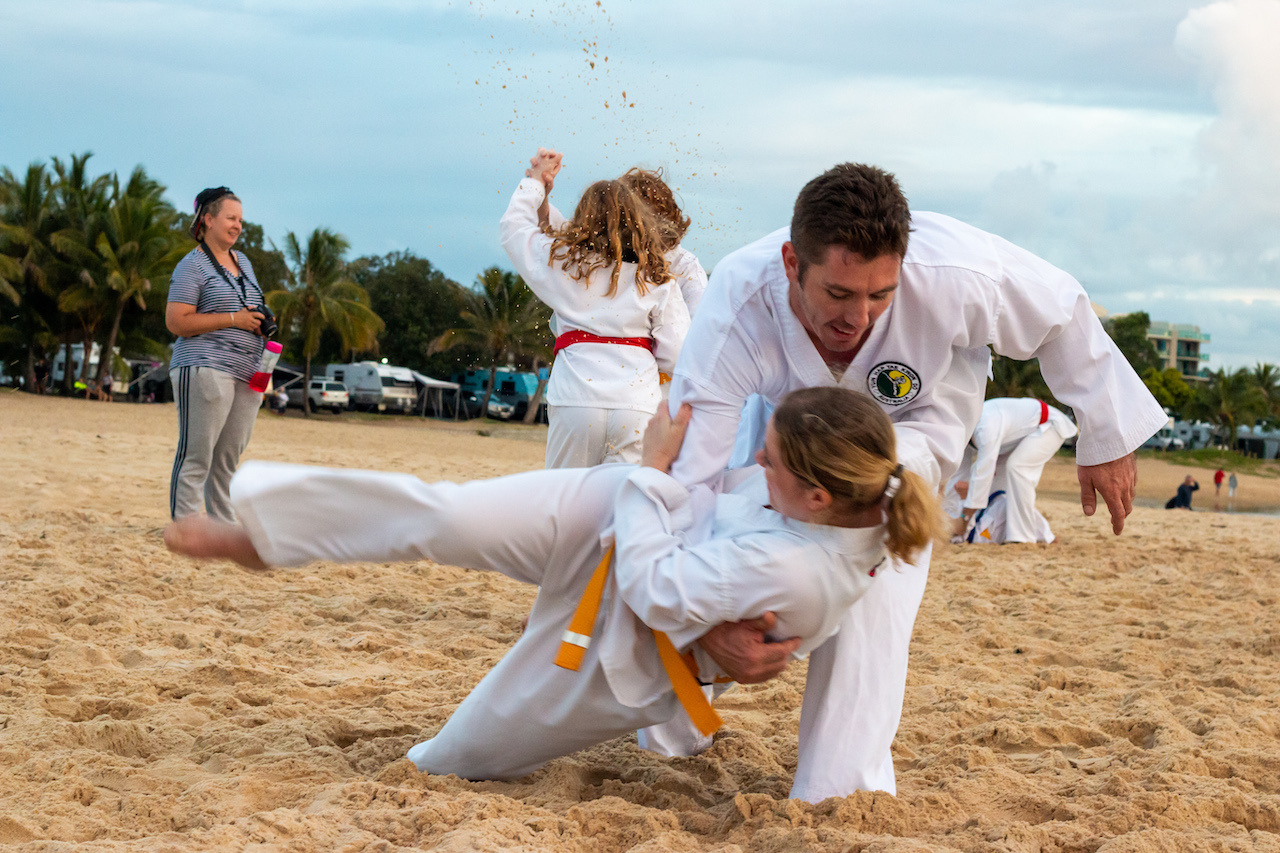
GRADING
Yun Hap gradings are held three times a year and give students a goal to work towards, and a sense of achievement in moving up a rank. Yun Hap gradings are professionally conducted by a grading panel comprising of senior Instructors, using a thorough and fair system to assess competency at each level. Coloured belts are assessed one on one, whereas black belt gradings are scored by a panel. High Dan grading (to 4th or above) are conducted by Grandmaster Sung Soo Lee.
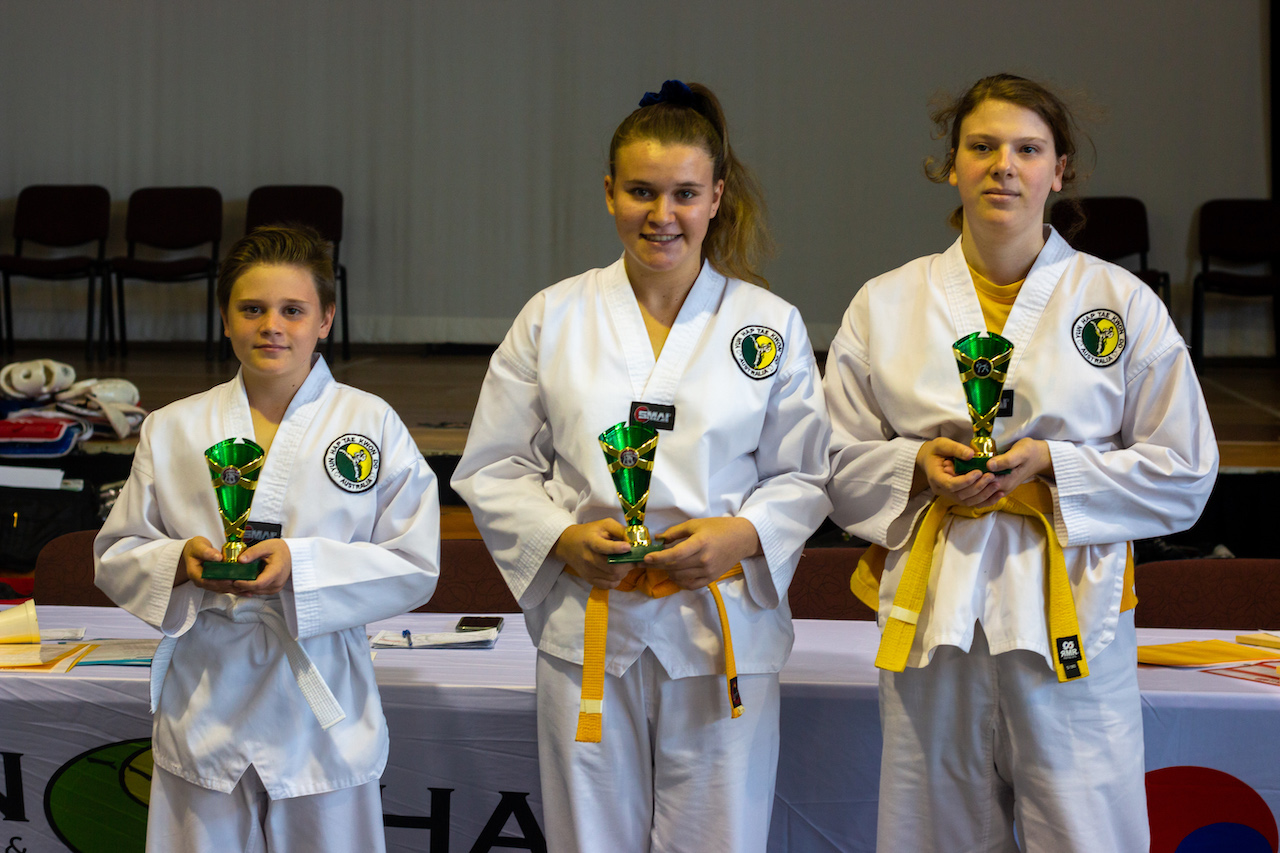
FITNESS, STRENGTH AND CONDITIONING
In any sport, cross-training or building up strength, speed, endurance, fitness, balance, and flexibility is crucial for maximum performance. Taekwondo is no different in this regard. Taekwondo athletes train in a wide variety of activities that are non-specific to taekwondo but very helpful. Many of these activities will also be a part of a normal class.
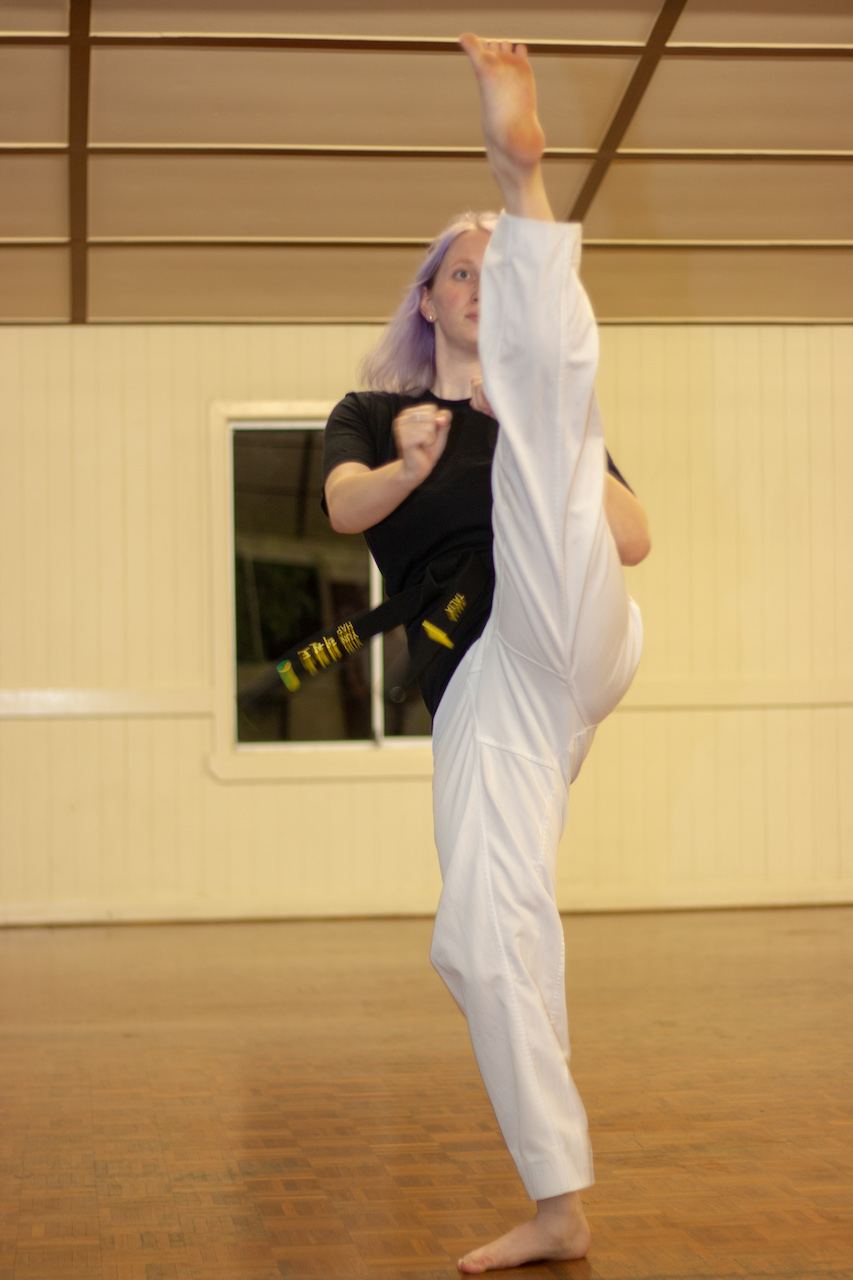
SPARRING
Sparring is probably the best known element of Taekwondo and is exciting and popular. It's done in classes, in a controlled environment, and beginners are not pressured to start sparring until they feel comfortable to do so. Sparring becomes a part of grading requirements only after the first 4 gradings have been completed, at 1st blue belt level. However, white and yellow belts are encouraged to spar in class, particularly when practice is non-contact, and yellow belts can enter tournaments to compete if they wish (and their coach approves). Taekwondo sparring at grading and competitions is FULL CONTACT, and participants cannot compete without wearing the full, required protective equipment. Modified rules apply to younger age groups and in some other circumstances.
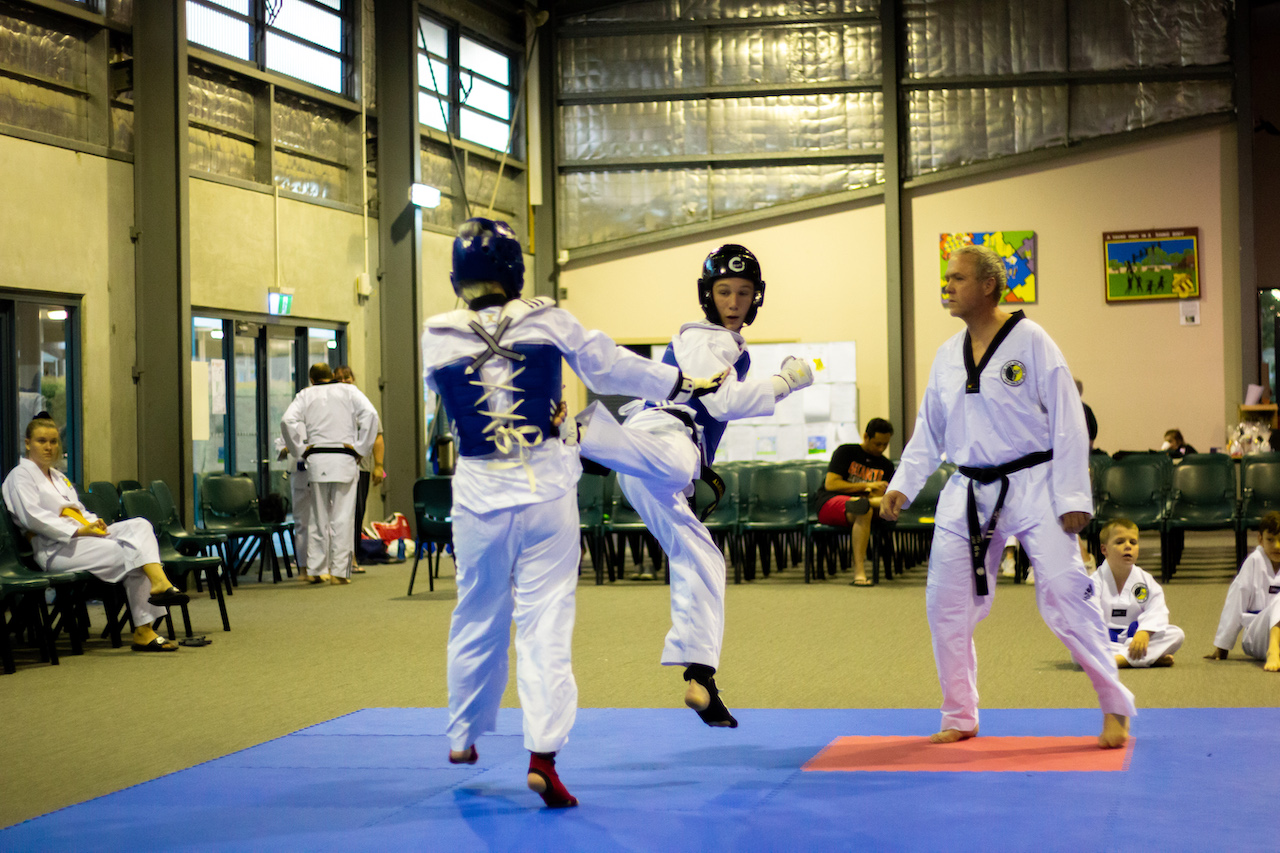
TIMBER & TILE BREAKING
Breaking is used in competition, demonstration and testing. Our blue belts start their breaking skills off with rebreakable plastic boards and, from Red Belt upwards, students are required to break timber for their grading. Timber and tile breaking (power breaking) are also events students can enter into at competitions and that may form part of demonstrations or gradings.
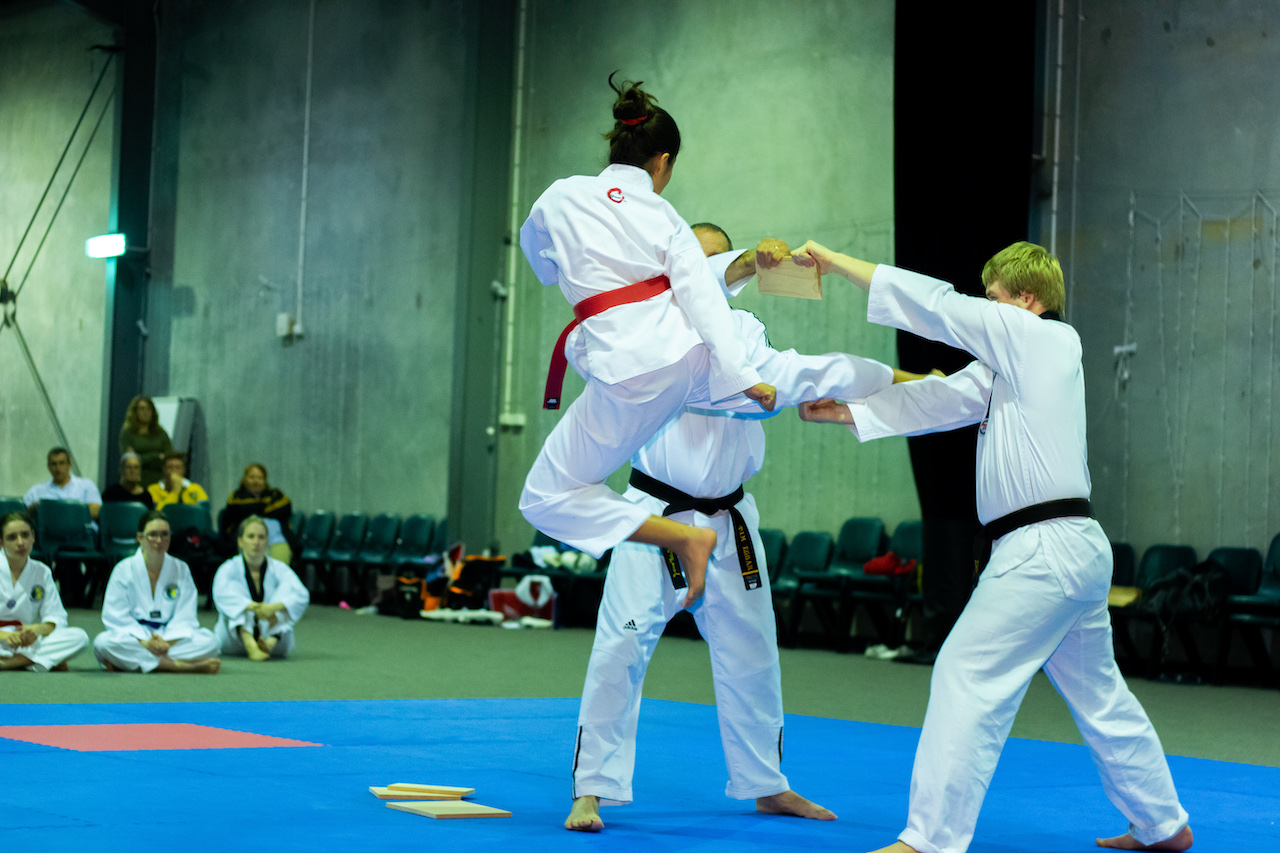
POOMSAE (PATTERNS)
Each belt level has a pattern to learn in order to advance to the next level. Patterns help students to master specific techniques and directional movements, and channel their energy and breathe accordingly. They illustrate how to link together a series of blocks and attacks into a logical flow. Consistent with international standards, Yun Hap Taekwondo uses the "taegeuk" style of poomsae for gradings, as this is the official style of World Taekwondo. Each pattern has its own theme and meaning and black belts are encouraged to explore these meanings as part of their training.
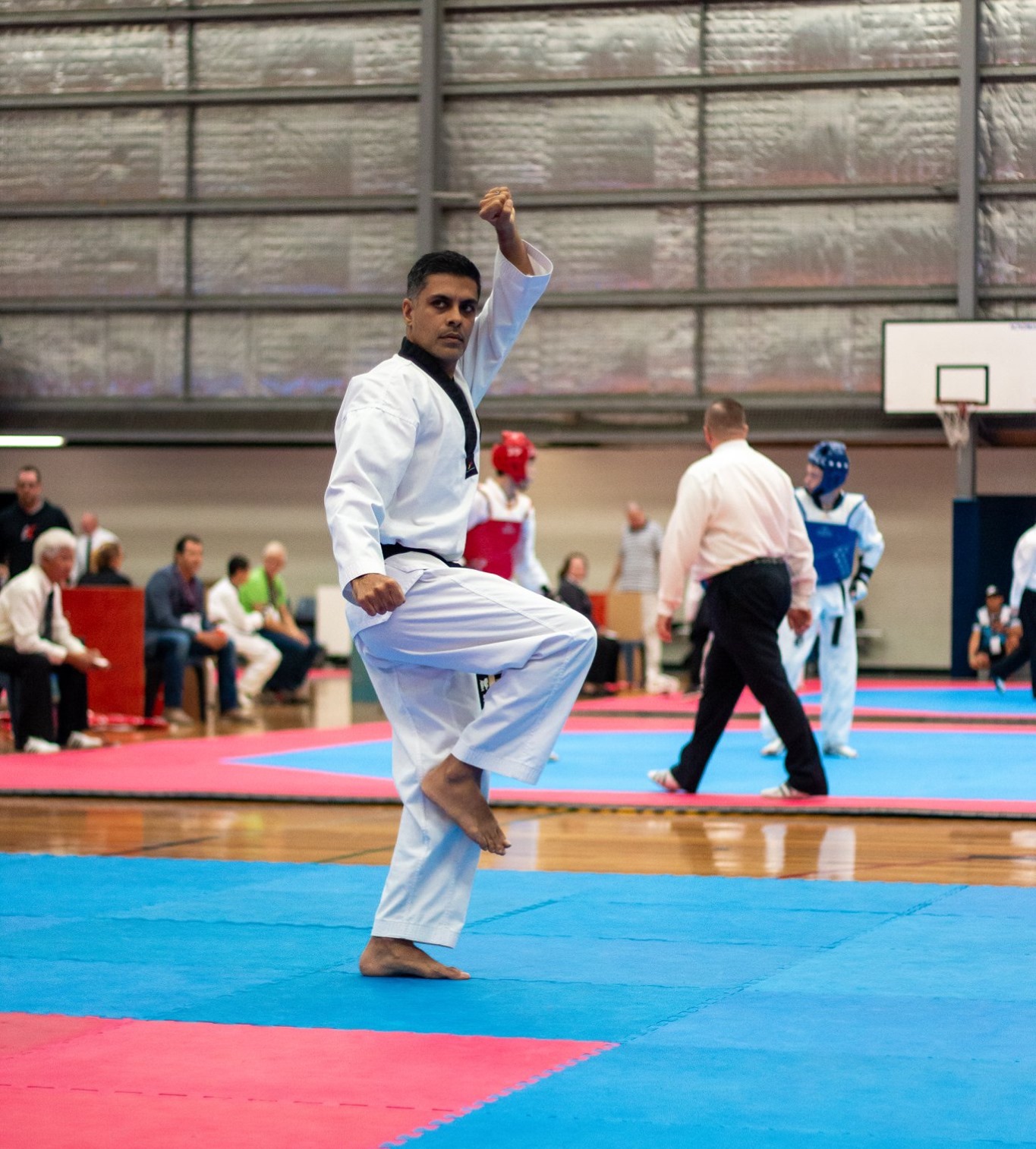
CREATIVE POOMSAE
Creative poomsae is performing a non-traditional pattern, one that is personally choreographed, and may include non-taekwondo moves. These are performed at demonstrations and competitions but are not part of our grading syllabus. They may be performed to music, and as such, contain some elements of dance, gymnastics and tricking. This is often also referred to as Freestyle Poomsae.
TAEKWONDO TRICKING
Taekwondo Tricking is another a creative element of taekwondo which allows further challenge and a high-level of skill. It involves a combination of gymnastics and taekwondo involving flips and aerial spinning kicks - some up to 720 turns in the air! It's currently only used for demonstration purposes.
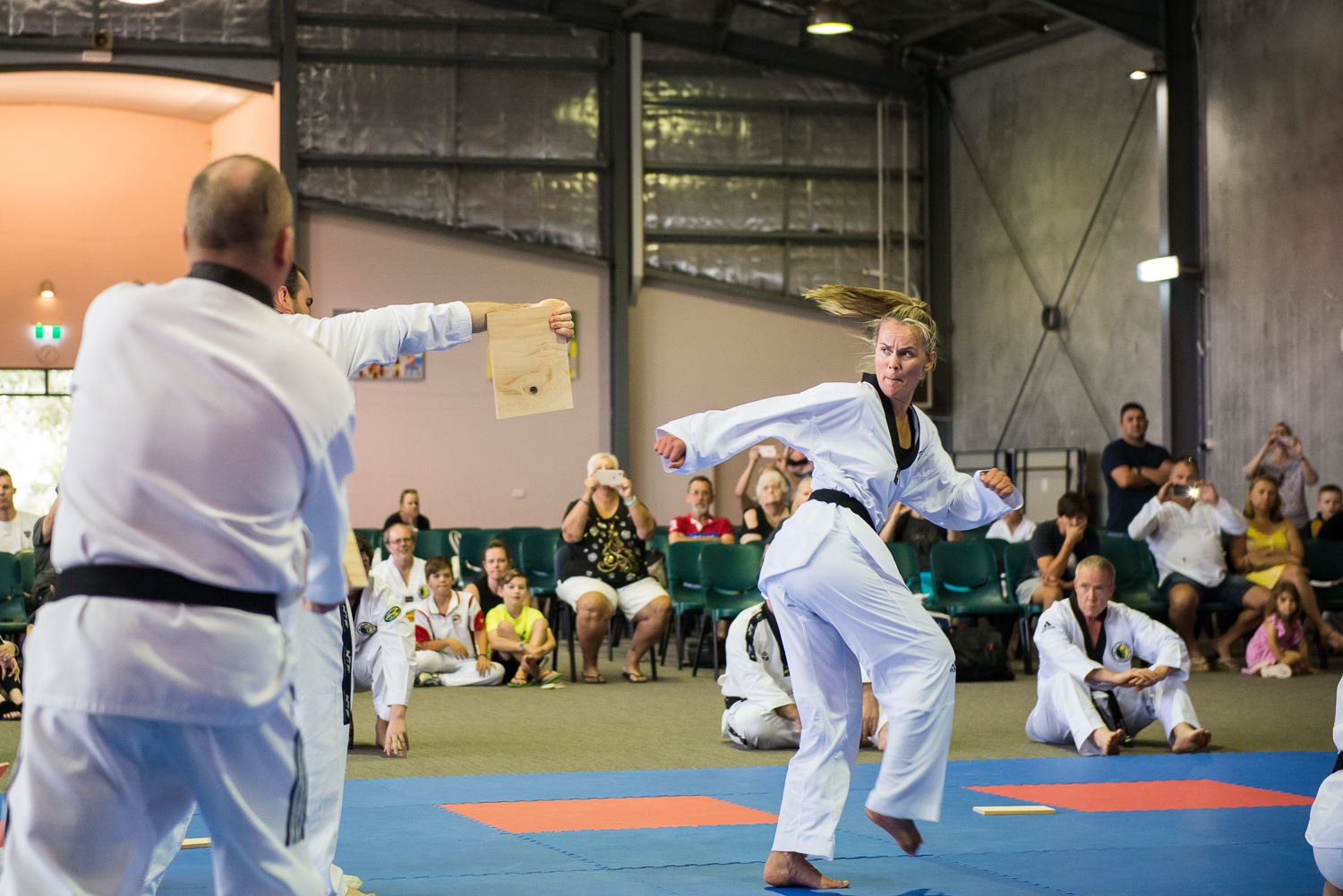
COMPETITIONS
Yun Hap Taekwondo is involved in competitions, and our instructors and some black belts hold coaching accreditations. Some are also referee and technical judges. Competitions often have a mixture of events including sparring, poomsae, creative, poomsae, team/ family poomsae, timber breaking, power breaking, and high kicking competition, though some competitions specialise. Each competition is different and has a package that gives the details of the event, so we encourage students and parents to read those when considering entering an event. Competitions are another way for students to hone their skills, and participate in the sport elements of our martial art.
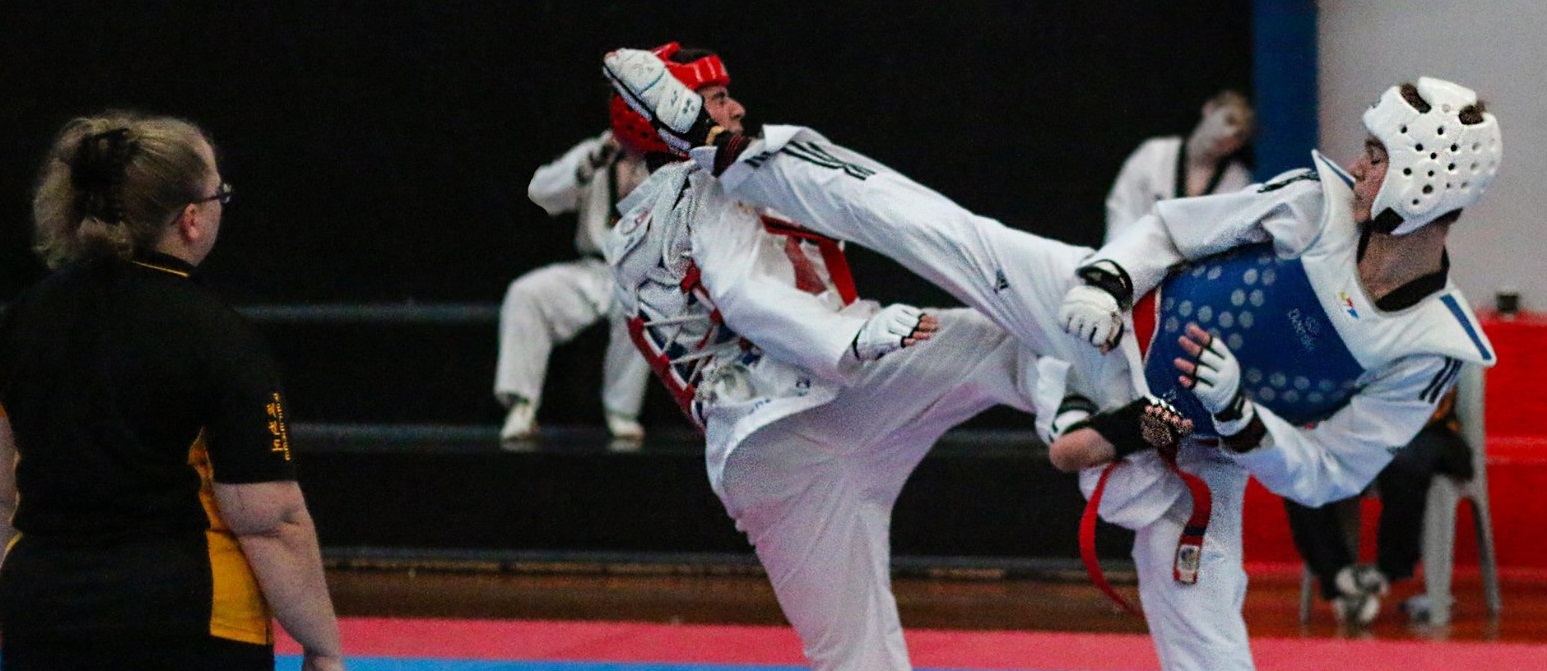
DISCIPLINE
Discipline comes in several different forms. There is general discipline, meaning how you behave around others and how you relate to others; there is self-discipline, meaning the ability to control yourself when faced with temptation or when faced with trying circumstances; and there is a discipline, meaning something that is studied carefully, pursued for self-improvement or simply followed as a way of life. Taekwondo training encompasses and fosters all of these types of discipline.
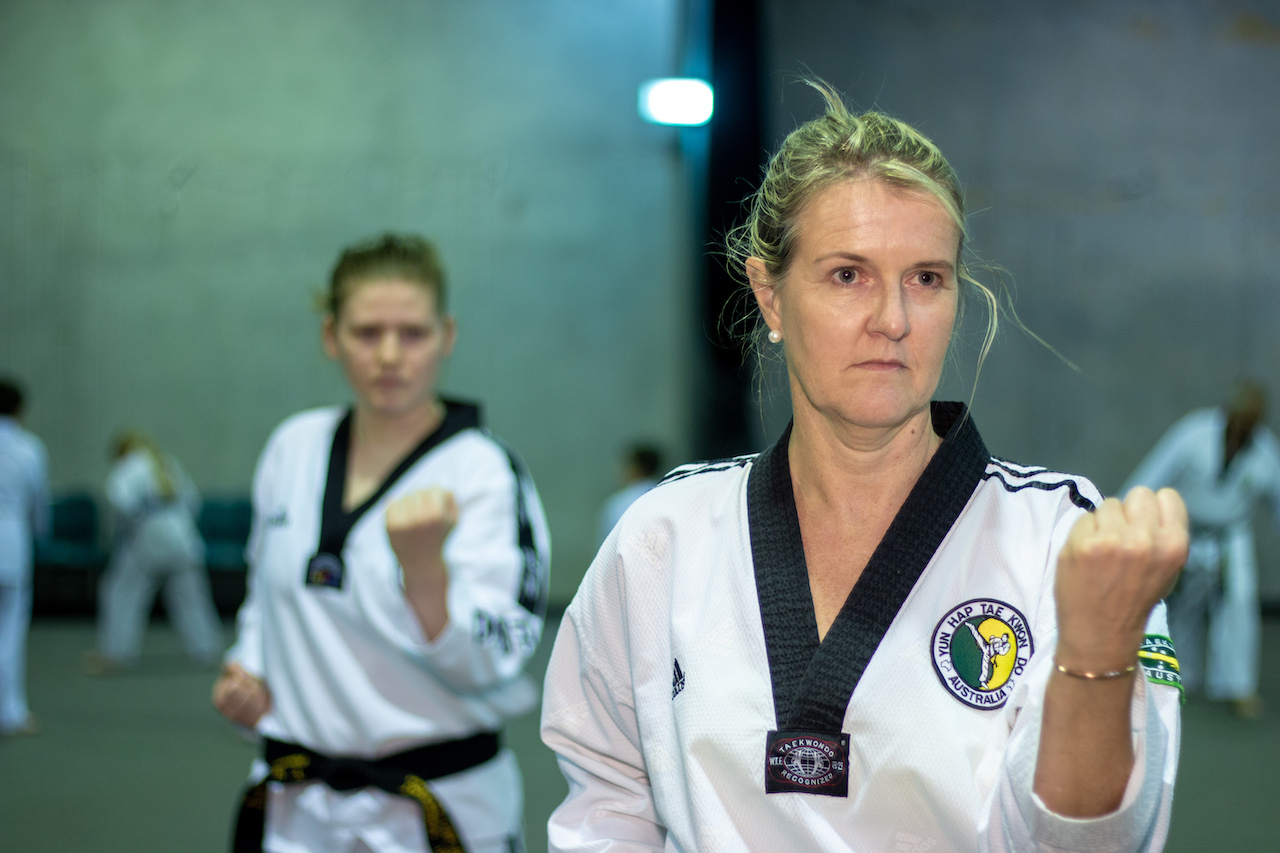
FUN & GAMES
Although we strive for excellence and place great importance on standards and high-performance, Yun Hap Taekwondo is a family-friendly club with a warm and welcoming atmosphere. We recognise that perceived 'fun' is conducive to learning, ensuring there is balance between fun and hard work. Instructors will incorporate learning-based games and fun activities into sessions and there are occasional activities outside of class time as well.
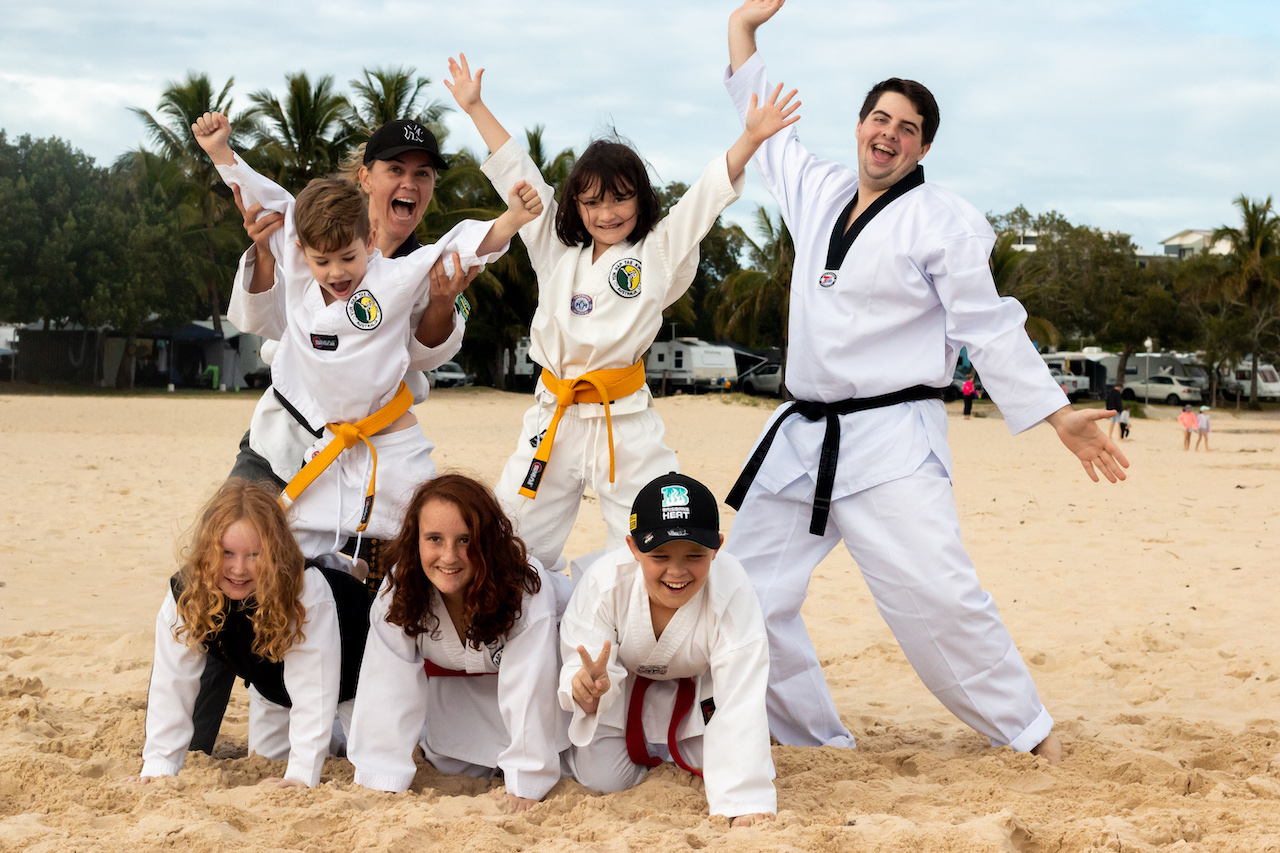
MEDITATION
Meditation is a means of transforming the mind, developing concentration, clarity, emotional positivity, and a calm viewing of the true nature of things. With regular work and patience these nourishing, focused states of mind can deepen into profoundly peaceful and energised states of mind. A lot of the training we do, repetitions, moving synchronised with breathing, focus, concentration, self-awareness and mental preparations are meditations in themselves. Taekwondo practice helps to promote a calmer, more self-aware individual. Focused breathing and directed meditation may also be a part of the classes but there is no directly spiritual element to Taekwondo meditation.
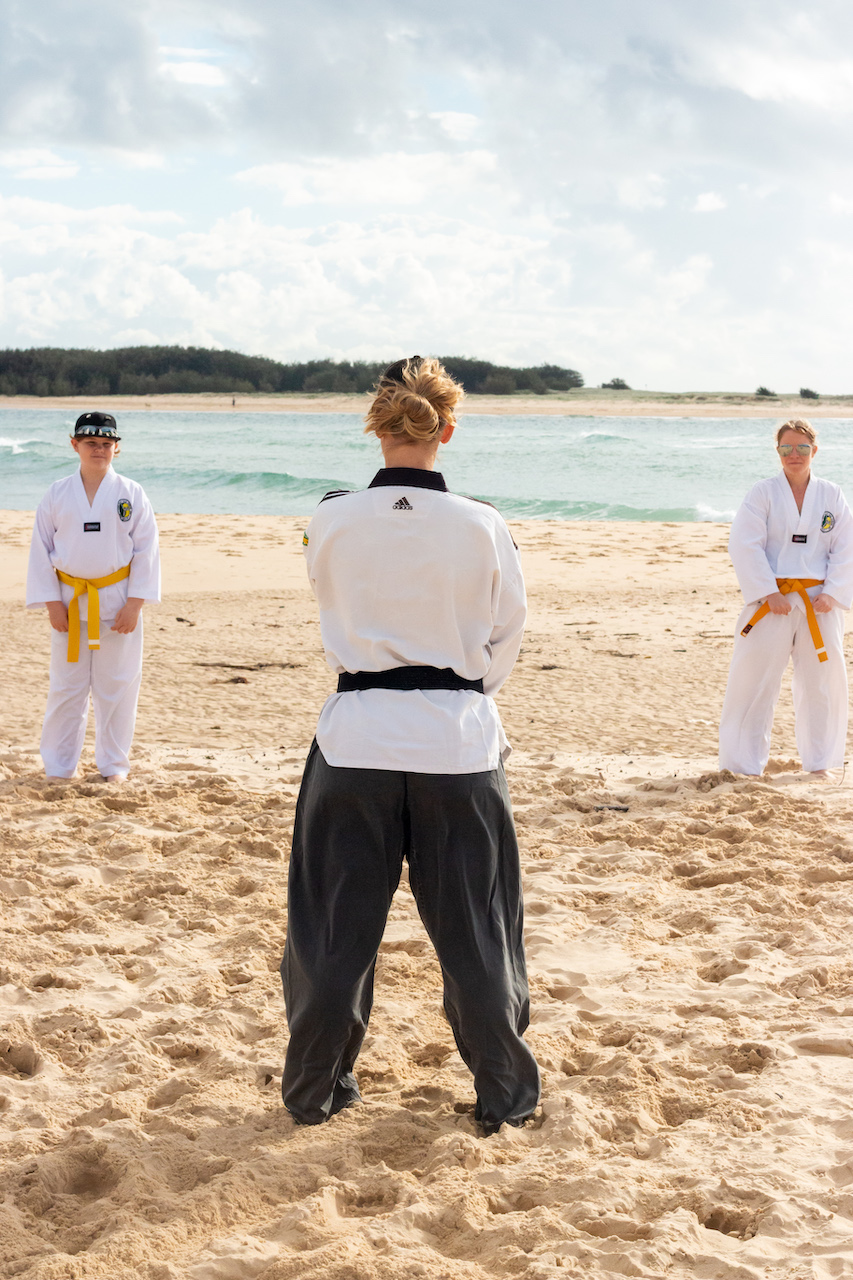
BEING A PART OF A CLUB
Being a part of a club presents many opportunities. Most notable are the social aspects: not only do you gain a sense of belonging to a community, you meet people, make new friends, and learn new skills, including how to get along with all sorts of different people. You will be training in a Taekwondo club with people of all different ages and backgrounds, though Taekwondo links us all. You also have opportunity to give back to your community through volunteer work and mutual support and we occasionally get involved in community activities. The Yun Hap club proudly provides in-club social gatherings each year to enable its members to interact outside of the dojang, and many of our club members volunteer on a regular basis at tournaments, seminars and inter-club events building relationships and contacts within the state, national, and international Taekwondo community.
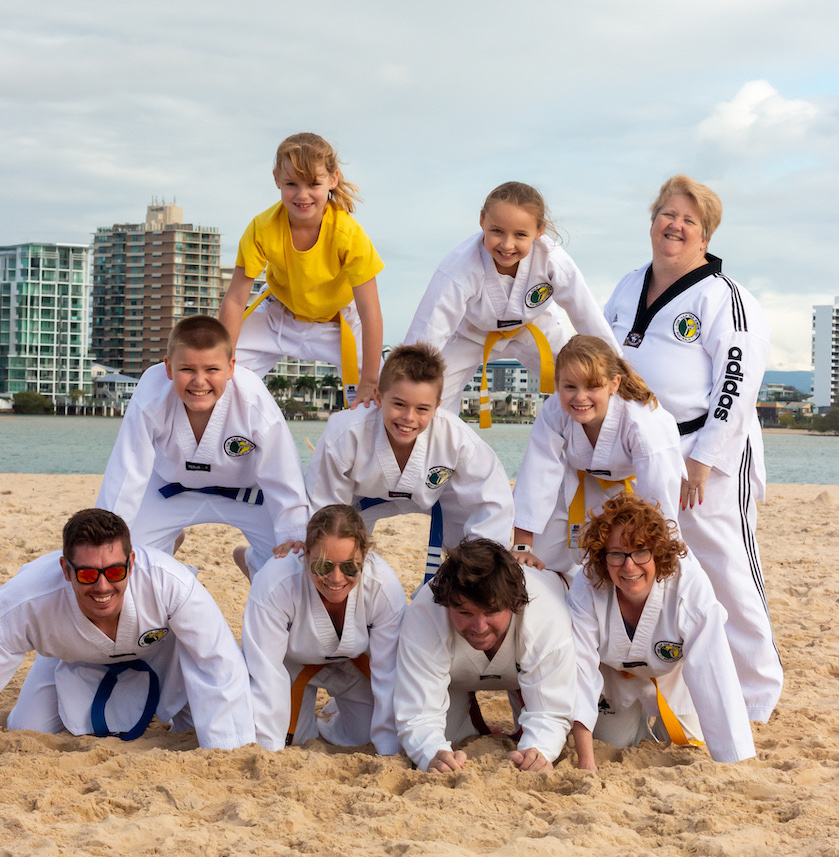
TRAINING CAMPS/ WORKSHOPS/ SEMINARS
There are many events, outside of regular classes, throughout the year for extended training/development and social purposes. Some of these are training camps, competitions, inter-state and international competitions, state training, workshops and seminars with other Masters/ experts from all around the world, coach/ referee/ judge/ first aid accreditation courses, etc and unique experiences like international training opportunities. These are all optional events and run with the support of our volunteers and taekwondo instructors.
